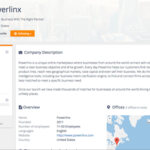5 Ways Leading Businesses Are Driving Supply Chain Innovation
Innovation in the supply chain is helping top companies around the world decrease lead times, minimize risk, cut costs and drive growth. To create this type of supply chain innovation in an era of rapidly changing markets, geographic shifts and expanding capabilities brought on by new technologies, successful businesses are increasingly turning to collaboration with other industry members – and sometimes even with competitors.
Below, find five ways businesses are pooling resources in order to drive supply chain innovation.
Partnering with Competitors
Forming relationships with competitors in order to drive new growth might seem counterintuitive, but it is bringing unexpected advantages to businesses in many industries. In particular, businesses in new industries can gain new visibility by partnering with their competitors.
On the outskirts of Cleveland, a new biomass production industry is gaining ground taking raw agricultural wastes from surrounding farms and converting them into energy. Several competing businesses are collaborating to use a central anaerobic digester that will allow Cleveland’s public power utility to generate higher levels of energy than if each company used just their own resources. Jay Schabel, Chief Executive of one such firm called RES Polyflow, told Industry Week that he does not view competitors as a threat but rather as opportunities to increase demand for his business’s services and build up their novel industry:
“There is plenty of polymer waste to go around. We are competing with the disbelief that there is an industry or that we are viable, and with landfills, frankly, because that is where it is all going.”
Joining Industry Clusters
Industry clusters, also known as business clusters, are concentrations of businesses in the same geographic area that bring about a competitive advantage through a concentration of resources. The theory behind industry clusters was spearheaded by Harvard Business School professor Michael Porter in The Competitive Advantage of Nations and include areas like Silicon Valley, Wall Street and Digital Media City.
Businesses located in the same geographic area whose competencies complement each other can collaborate, whether formally or informally, in industry clusters. When they work together, industry cluster members create greater growth potential and increase their competitive advantage, according to a Cognizant report.
The benefits of industry clusters are numerous, including:
- Drastic streamlining and shortening of the supply chain through geographic proximity
- Cost cutting, shortened lead times and decreased geographical and political risks due to the ability to source parts and services locally
- Speedier feedback loops and increased productivity through faster access to suppliers and customers
- Concentrations of workers with in-demand and relevant skills due to demand from the industry cluster
Sharing Technology in Supply Chain Innovation
All leading businesses recognize that innovating their processes and technologies is imperative in the globalizing economy, but not every company has the resources to facilitate the research that would lead to streamlined operations. 46 percent of manufacturers alone reported limited operational and financial resources as the biggest blocker to their efforts to innovate in a survey conducted by KPMG. Sharing technology, then, is one way businesses are bypassing financial restrictions to drive supply chain innovation.
Hyphen, a rapid prototyping and environmental testing facility in Canada, recently began such a technology sharing partnership with the University of Guelph. Under the agreement, Hyphen will be able to access the research equipment and applications at the University’s design and prototyping facility for haptic devices. In turn, University members will have access to Hyphen’s additive manufacturing facility at reduced pricing, providing University students and researchers access to rapid prototyping for their environmental projects.
Establishing R&D Partnerships
Besides sharing technology, innovative businesses are also establishing R&D partnerships to drive supply chain innovation. Such partnerships generate a much higher return on investment from research efforts by spreading research-related costs across multiple businesses.
In a prime example of the value of R&D partnerships, original equipment manufacturers, suppliers, researchers and others across the U.S. are combining efforts to address the challenges facing the power electronics industry. Called the Power Electronics Industry Collaborative, the members will combine efforts in order to develop an in-depth understanding of the manufacturing and innovation capabilities of the nation’s power electronics industry and develop the ecosystem needed to support world-class power electronics design and manufacturing. The Collaborative recently received $500,000 in support from the National Institute of Standards and Technology to pursue its goals.
Collaboration with Suppliers
One factor preventing improvements and supply chain innovation is a lack of supply chain visibility. New technologies, however, are allowing for increased transparency and trust between suppliers and their customers. Real-time capacity and demand data is now being shared between manufacturers and their top-tier suppliers, for example. This is a trend KPMG partners Brian Higgins and Dr. Marcus Schueller anticipate will continue to grow:
“We are seeing more companies looking to establish a supply chain platform that focuses on reducing information lead times, recognizing that removing a day of information lead time out of their planning and execution processes can drive as much benefit as removing a day of physical lead-time.”
In the future, increased supplier transparency and supply chain innovation will lead to shorter and more reliable supply chains.
A New Way to Find Partners
As advancing technologies and localized industry clusters push businesses to pool resources, we can expect to see supply chain innovation move at a faster rate than ever before. Such innovations will decrease lead times, create stability and, ultimately, encourage more collaboration.
If your business is looking to enter a technology, research or any other partnership in order to innovate your supply chain, let the Powerlinx analysts connect you with the right businesses. Learn more about why automated business matching is the best way to drive new partnerships, and join today under the Powerlinx 90-day guarantee.
Featured image by Boegh





